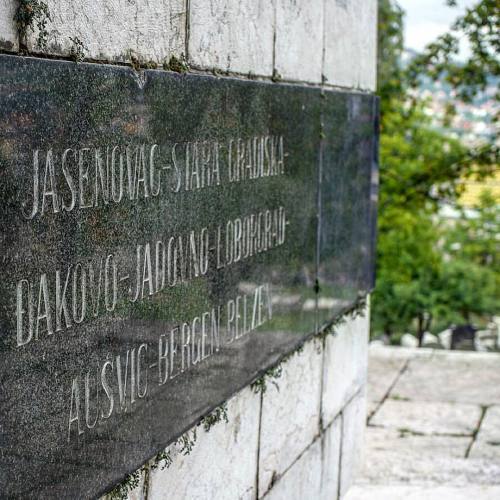Frank W. Benson - Summer Of 1909

Frank W. Benson - Summer of 1909
More Posts from Farkash-gallery-blog and Others

Norman Rockwell’s ‘Saying Grace’ headlines the top 10 most expensive works of art sold at international auctions in December.
Here’s a look at the top 10.

Vincent Van Gogh: Casas en Auvers, 1890.

What a Fox. | http://cur.im/1iBu1UU
Fine Art Prints from $25, by Jay Fleck (USA)

Old Jewish cemetery #bosnia #sarajevo #streets #anti_fascism (at Sarajevo, Bosnia and Herzegovina)

http://smile.amazon.com/Kissinger-1923-1968-Idealist-Niall-Ferguson/dp/1594206538/ref=tmm_hrd_swatch_0?_encoding=UTF8&qid=1443645949&sr=8-1
The definitive biography of Henry Kissinger, based on unprecedented access to his private papers No American statesman has been as revered or as reviled as Henry Kissinger. Once hailed as “Super K”—the “indispensable man” whose advice has been sought by every president from Kennedy to Obama—he has also been hounded by conspiracy theorists, scouring his every “telcon” for evidence of Machiavellian malfeasance. Yet as Niall Ferguson shows in this magisterial two-volume biography, drawing not only on Kissinger’s hitherto closed private papers but also on documents from more than a hundred archives around the world, the idea of Kissinger as the ruthless arch-realist is based on a profound misunderstanding. The first half of Kissinger’s life is usually skimmed over as a quintessential tale of American ascent: the Jewish refugee from Hitler’s Germany who made it to the White House. But in this first of two volumes, Ferguson shows that what Kissinger achieved before his appointment as Richard Nixon’s national security adviser was astonishing in its own right. Toiling as a teenager in a New York factory, he studied indefatigably at night. He was drafted into the U.S. infantry and saw action at the Battle of the Bulge—as well as the liberation of a concentration camp—but ended his army career interrogating Nazis. It was at Harvard that Kissinger found his vocation. Having immersed himself in the philosophy of Kant and the diplomacy of Metternich, he shot to celebrity by arguing for “limited nuclear war.” Nelson Rockefeller hired him. Kennedy called him to Camelot. Yet Kissinger’s rise was anything but irresistible. Dogged by press gaffes and disappointed by “Rocky,” Kissinger seemed stuck—until a trip to Vietnam changed everything. The Idealist is the story of one of the most important strategic thinkers America has ever produced. It is also a political Bildungsroman, explaining how “Dr. Strangelove” ended up as consigliere to a politician he had always abhorred. Like Ferguson’s classic two-volume history of the House of Rothschild, Kissinger sheds dazzling new light on an entire era. The essential account of an extraordinary life, it recasts the Cold War world.

Jugend magazine cover (Issue 47) by Julie Wolfthorn, 1897.
Julie Wolfthorn (1864-1944) was a German-Jewish female painter who created many illustrations for Jugend and was a well known and established portrait painter in Germany. Since the art schools did not accept women at that time, she travelled to Paris in the 1890′s to learn painting techniques and skills. She later became involved with the Berlin Secession and became a prominent member of it. Among her clients and friends were many female artists and important figures in society. Her life did not end well though. She later died in her 70′s at a camp established by the SS for Jewish citizens. She was said to have continued her drawing despite the horrific conditions there.
(Source: berlin-woman, wikipedia)

Curator Daniel Palmer at the Whitney Museum speaking about artist Ben Shahn

Studying Torah on We Heart It. http://weheartit.com/entry/67125142/via/aestheticpleasures

Picture titled ‘Algerian Jew’ from the Jewish Encyclopedia.
Algeria’s Jewish community dates from the Roman invasion and the destruction of the Second Temple. Read more about the Algerian Jewish community here.
And see synagogues of the Algerian Jewish community here.

Jew at Prayer, Marc Chagall. 1913.
-
 cinnalime liked this · 7 months ago
cinnalime liked this · 7 months ago -
 tamalitodelujo liked this · 8 months ago
tamalitodelujo liked this · 8 months ago -
 gatorade1 liked this · 1 year ago
gatorade1 liked this · 1 year ago -
 angelfuvk liked this · 2 years ago
angelfuvk liked this · 2 years ago -
 lovelydeliciouscollective liked this · 2 years ago
lovelydeliciouscollective liked this · 2 years ago -
 skam-iverse reblogged this · 2 years ago
skam-iverse reblogged this · 2 years ago -
 faulmccartneyisbloodyman liked this · 2 years ago
faulmccartneyisbloodyman liked this · 2 years ago -
 sirwhies liked this · 3 years ago
sirwhies liked this · 3 years ago -
 farseerofthestorm reblogged this · 3 years ago
farseerofthestorm reblogged this · 3 years ago -
 amri-and-art liked this · 3 years ago
amri-and-art liked this · 3 years ago -
 sillymusicrockkid liked this · 3 years ago
sillymusicrockkid liked this · 3 years ago -
 thewindthatmovesthecloudsaw-blog liked this · 3 years ago
thewindthatmovesthecloudsaw-blog liked this · 3 years ago -
 aylinhadtimeforthis liked this · 3 years ago
aylinhadtimeforthis liked this · 3 years ago -
 theregoesallthefucksigive-blog liked this · 3 years ago
theregoesallthefucksigive-blog liked this · 3 years ago -
 hippsterjessica reblogged this · 3 years ago
hippsterjessica reblogged this · 3 years ago -
 lohnjennon liked this · 3 years ago
lohnjennon liked this · 3 years ago -
 decaffeinateddonkeyfreakprune liked this · 3 years ago
decaffeinateddonkeyfreakprune liked this · 3 years ago -
 rosacentifoliavariegata reblogged this · 3 years ago
rosacentifoliavariegata reblogged this · 3 years ago -
 rosacentifoliavariegata liked this · 3 years ago
rosacentifoliavariegata liked this · 3 years ago -
 septembergold reblogged this · 3 years ago
septembergold reblogged this · 3 years ago -
 lennonish1 liked this · 3 years ago
lennonish1 liked this · 3 years ago -
 septembergold liked this · 3 years ago
septembergold liked this · 3 years ago -
 silverskyuwu liked this · 3 years ago
silverskyuwu liked this · 3 years ago -
 ya-boiiiii liked this · 4 years ago
ya-boiiiii liked this · 4 years ago -
 psychedelicsound67 liked this · 4 years ago
psychedelicsound67 liked this · 4 years ago -
 a-little-bit-of-tradition reblogged this · 4 years ago
a-little-bit-of-tradition reblogged this · 4 years ago -
 whatdoyouwantworld liked this · 4 years ago
whatdoyouwantworld liked this · 4 years ago -
 clearobservationmoon reblogged this · 4 years ago
clearobservationmoon reblogged this · 4 years ago -
 clearobservationmoon liked this · 4 years ago
clearobservationmoon liked this · 4 years ago -
 scarie-carrie liked this · 4 years ago
scarie-carrie liked this · 4 years ago -
 kaskelott reblogged this · 4 years ago
kaskelott reblogged this · 4 years ago -
 kaskelott liked this · 4 years ago
kaskelott liked this · 4 years ago -
 whinervisitor liked this · 4 years ago
whinervisitor liked this · 4 years ago -
 marguerite-96 reblogged this · 4 years ago
marguerite-96 reblogged this · 4 years ago -
 thetimelordmeeps liked this · 4 years ago
thetimelordmeeps liked this · 4 years ago -
 deadpoetsandco reblogged this · 4 years ago
deadpoetsandco reblogged this · 4 years ago -
 seeds-knees liked this · 4 years ago
seeds-knees liked this · 4 years ago -
 m00ndanse reblogged this · 4 years ago
m00ndanse reblogged this · 4 years ago -
 tibblers liked this · 4 years ago
tibblers liked this · 4 years ago -
 chickennsoup023-blog liked this · 4 years ago
chickennsoup023-blog liked this · 4 years ago -
 thebeatlestookovermylife liked this · 4 years ago
thebeatlestookovermylife liked this · 4 years ago -
 balsamic--vinegar liked this · 4 years ago
balsamic--vinegar liked this · 4 years ago